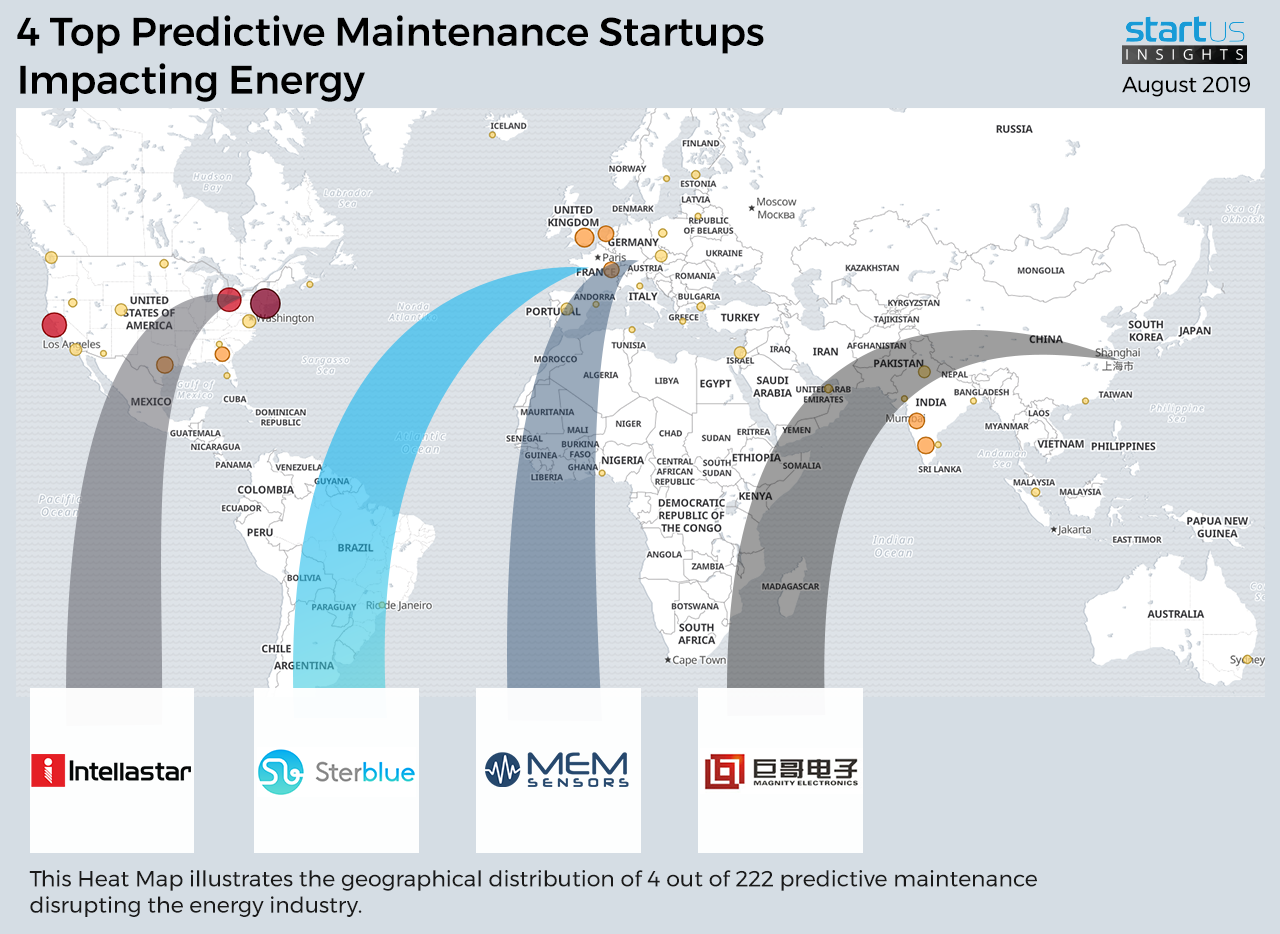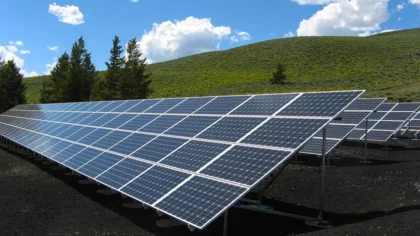Our Innovation Analysts recently looked into emerging technologies and up-and-coming startups working on solutions for the energy industry. As there is a large number of startups working on a wide variety of solutions, we decided to share our insights with you. This time, we are taking a look at 4 promising Predictive Maintenance Solutions.
Heat Map: 4 Top Predictive Maintenance Solutions
For our 4 top picks, we used a data-driven startup scouting approach to identify the most relevant solutions globally. The Global Startup Heat Map below highlights 4 interesting examples out of 222 relevant solutions. Depending on your specific needs, your top picks might look entirely different.
Intellastar – Automated Fault Diagnostics
Maintaining an uninterrupted power supply is one of the top priorities for the energy sector. In particular, automated fault prediction addresses this challenge by employing Industrial Internet of Things (IIoT) sensors and implementing Machine Learning (ML) algorithms to continuously monitor a site. This ensures the collection of power usage data to build an early warning system to mitigate electricity downtimes, outages, and breakdowns.
The US-based startup Intellastar develops Tipify, a platform for predictive maintenance of smart grids, distributed energy networks, and electricity systems of smart buildings. Its Fault Detection and Diagnostics (FDD) module use mathematical, logical and statistical analysis to monitor site performance, detect faults and alert users about required performance improvements.
MEM Sensors – Structural Health Monitoring
Turbines, used in both conventional and renewable energy sectors, regularly undergo wear and tear that influences their vibration characteristics. Unexpected turbine frequency deviations pose severe threats that are alleviated by Structural Health Monitoring (SHM). It exploits vibration, sonic and ultrasonic information and sensors in order to monitor the condition of turbines and extend their durability.
German startup MEM Sensors manufactures low-noise accelerometers, sensors, for vibration analysis, named 3D ACC. Using an ultralow frequency range of 0-10Hz and Fast Fourier Transformation (FFT) algorithm, the company’s sensors provide an accurate frequency analysis for the SHM of wind power plants and deliver timely updates on the condition of the turbine and its components.
Magnity – Infrared Thermography
Infrared thermography intends to tackle issues associated with excessive heat detection in electric motors, energy distribution systems, and components like bearings and circuitry. This technology utilizes thermal sensors, cameras, and imagery to discover any abnormalities, monitor temperatures of interacting equipment parts and prevent inflammation.
Chinese startup Magnity utilizes micro-electromechanical infrared imaging sensors, highly sensitive optical readout schemes and micro-bolometers to create online thermal imaging systems and thermal cameras to run diagnostics for detecting high-voltage transmission in power lines and industry 4.0 facilities.
Sterblue – Unmanned Aerial Inspections Of Energy Assets
Inspecting power lines is a complex task mainly because of remote locations, hard-to-reach structures, and high labor costs. In contrast, unmanned aerial inspections solve this problem by employing lightweight, portable, and cost-effective drones that produce high quality visual and sensor assessments of transmission and distribution towers, networks, pipelines, and other locations which are difficult to access.
French startup Sterblue offers software that helps drones inspect wind turbines and power grids. It guides Unmanned Aerial Vehicles (UAVs) along trajectories that wrap tightly around hard-to-reach structures while it collects images, transmits them to the cloud, finds critical anomalies and generates predictive maintenance reports.
What About The Other 218 Solutions?
While we believe data is key to creating insights it can be easy to be overwhelmed by it. Our ambition is to create a comprehensive overview and provide actionable innovation intelligence for your Proof of Concept (PoC), partnership, or investment targets. The 4 startups showcased above are promising examples out of 222 we analyzed for this article. To identify the most relevant solutions based on your specific criteria and collaboration strategy, get in touch.







